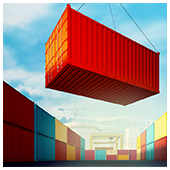 Virtualization and container technologies are confusing topics in their own right, and comparing and contrasting them is even harder. To understand the differences between container and virtualization technologies, it’s best to clear up some commonly misunderstood information on how they work.
Virtualization and container technologies are confusing topics in their own right, and comparing and contrasting them is even harder. To understand the differences between container and virtualization technologies, it’s best to clear up some commonly misunderstood information on how they work.
Containers are made up of the bare minimum hardware and software requirements to allow a specific program to run. For example, if you want to give employees access to a single Mac-based server application, but everything else you run is in Windows, it would be a waste to build a new machine for just that program. Containers allow you to partition just the right amount of hardware power and software overhead to run that Mac program on your Windows server.
Misconception #1: Containers require virtualization
Previously, containers could only be created and managed in the Linux operating system (OS). This meant complicated and sometimes unreliable improvisation was required to benefit from container technology on Windows and Mac servers.
First, you would need to virtualize a full-fledged Linux installation on your Windows or Mac server, and then install container management inside of Linux. Now, container management software can run on Windows and MacOS without the confusing multi-layer systems.
Misconception #2: There is only one container vendor
Traditional virtualization technology, which creates entire virtual computers rather than single-application machines, allowed two decades for vendors to enter the market and improve their offerings. Containers, however, didn’t break into the mainstream until a few years ago.
Fortunately, there are still more than enough container vendors. Docker dominates the industry and headlines, but there are at least a dozen other programs to choose from.
Misconception #3: You can’t create and manage containers in bulk
Orchestrators are separate programs that allow you to scale up your use of containers. If you need to partition more hardware power so more users can use a container, or if you need to create several identical containers, orchestrators make that possible.
Misconception #4: Containers are faster than virtual machines
Obviously, virtualizing an entire operating system and the hardware necessary to run it requires more management and processing requirements. A lot of people tend to think this means containers are faster than virtualized machines. In reality, containers are just more efficient.
Accessing a container is as simple as opening it and using the application. A virtualized machine, however, needs to be booted up, a user needs to log in to the OS, and then you can rummage through folders to open an application. Most of the time containers are faster, but there are instances when that’s not true.
Virtualization and containers are complicated technologies. For now, just remember that 1) Virtualization and containers are separate technologies, each with pros and cons, and 2) you have plenty of software options to manage containers (sometimes in bulk). For anything more specific than that, give us a call!



